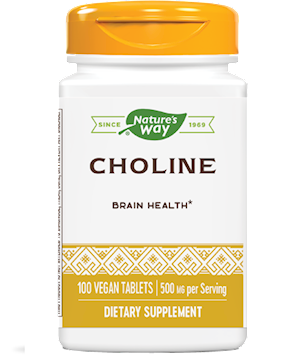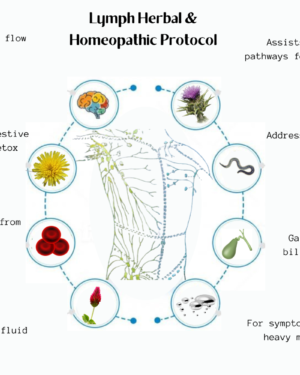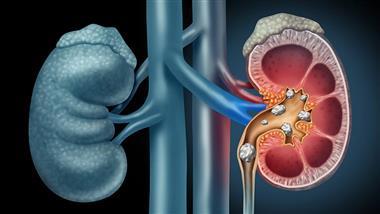STORY AT-A-GLANCE
- According to a recent “cradle-to-gate life cycle” analysis, the lab-grown meat industry produces four to 25 times more CO2 than traditional animal husbandry
- Cultured meats are ultraprocessed and therefore likely to cause health problems similar to those caused by other ultraprocessed products, such as obesity, cardiovascular diseases, Type-2 diabetes, metabolic syndrome, irritable bowel syndrome, cancer, mental health problems and increased all-cause mortality
- The starting ingredients in the new fermented synthetic biology products are cheap sugars derived from genetically engineered (GE) corn and soy. GE crops are grown in environmentally destructive monocultures that use loads of herbicides, pesticides and synthetic fertilizers. As a result, they’re loaded with chemical residues
- Once the target organisms in the ferment have consumed the nutrients they need, what’s left over is hazardous biowaste that must be deactivated and safely disposed of. The waste cannot be sent to a landfill or used for any other purpose
- Lab-grown meats are not about your health or the environment’s; they’re a tool to phase out farmers and ranchers and replace them with an ultraprocessed product controlled by patents
Lab-grown, or cultured, meat is being promoted as the wave of the future — the “green, sustainable” way to eat. No animal suffering, no greenhouse gas emissions, just meat-like protein that will taste like the burgers and steaks you’re used to. Too bad it’s all a lie.
Beneath the greenwashed façade, the promises of lab-grown meat fall flat. Lab-grown meats are not about your health or the environment’s; they’re a tool to phase out farmers and ranchers and replace them with an ultraprocessed product controlled by patents.
Importantly, even if cultured meats aren’t toxic per se, they’re ultraprocessed products1 and therefore likely to cause health problems similar to those caused by other ultraprocessed foods, such as obesity,2 cardiovascular diseases, Type-2 diabetes, metabolic syndrome, irritable bowel syndrome, cancer,3 mental health problems4 and increased all-cause mortality.5,6,7,8,9
On top of that, they’re more harmful for the environment than conventional ranching. Since synthetic biology relies on genetically engineered (GE) monoculture, it creates the very things they claim to counteract, namely environmental degradation that promotes climate change.
Synthetic Biology Is Made With Junk Food Ingredients
In the video above, Alan Lewis, vice president of government affairs for Natural Grocers, reviews what goes into the making of synthetic biology. Synthetic biology goes by many names, including “gene edited fermentation” and “precision fermentation products.”
While that sounds fairly innocuous, synthetic biology manufacturers rarely ever discuss what goes into the feed they use to grow the target organism, or what happens to the waste at the end of the fermentation process. That’s understandable, as both raise a number of serious questions.
As explained by Lewis, the starting ingredients in fermented synthetic biology products are cheap sugars derived from genetically engineered corn and soy. All GE crops are grown in environmentally destructive monocultures with taxpayer subsidies, and use loads of herbicides such as glyphosate, pesticides like neonicotinoids, and synthetic fertilizers.
As a result, they’re loaded with chemical residues. In addition to a base of sugars, hundreds of other ingredients may be added to the ferment in order to produce the desired end product, such as a certain protein, color, flavor or scent.
As explained by Lewis, the most-often used microorganism in the fermentation process is E. coli. The E. coli is gene-edited to produce the desired compound through its digestive process.
The microorganism must also be antibiotic-resistant, since it needs to survive the antibiotics used to kill off other undesirable organisms in the vat. As a result, antibiotic-resistant organisms also become integrated into the final product, and the types of foodborne illness that might be caused by gene-edited antibiotic-resistant E. coli and its metabolites are anyone’s guess. Nobody knows what such illness might look like.
Cultured Meat Produces Toxic Biowaste
Aside from the desired target metabolite, these gene-edited organisms may also be spitting out any number of non-target metabolites with unknown environmental consequences and health effects.
As explained by Lewis, the various “feed” ingredients are placed in a fermentation bioreactor set at 87 to 90 degrees Fahrenheit for anywhere from 24 to hundreds of hours to grow the target microorganism. The target organisms in the ferment consume the nutrients they need, and what’s left over after those organisms are extracted is hazardous biowaste.
While traditional fermentation processes, such as the making of beer, produce waste products that are edible by animals, compostable and pose no biohazard, the biowaste from these synthetic biology ferments must first be deactivated, and then must be securely disposed of. It cannot go into a landfill. Making food that produces hazardous biowaste is hardly a sustainable model.
Indeed, precision fermentation — i.e., the process of engineering a gene sequence for a specific protein into a bacterium or yeast strain, and then growing it in fermenters to produce the required protein — has been used for decades in the production of drugs and vaccines.10
According to a recent “cradle-to-gate life cycle” analysis,11,12,13,14 the lab-grown meat industry produces anywhere from four to 25 times more CO2 than traditional animal husbandry.
As noted by the authors, investors have poured billions of dollars into animal cell-based meat (ACBM) sector based on the theory that cultured meat is more environmentally friendly than beef. But according to these researchers, that hype is based on flawed analyses of carbon emissions.
The primary sources of CO2 emissions are the purification processes, which require fossil fuels. The bacteria used to produce the “meat” releases endotoxins, and these must be eliminated from the growth medium or else the cells won’t reproduce properly. As noted by the authors:
“Animal cell culture is traditionally done with growth medium components which have been refined to remove/reduce endotoxin. The use of these refinement methods contributes significantly to the economic and environmental costs associated with pharmaceutical products since they are both energy and resource intensive.”
Based on this assessment, each kilo of cultured meat produces anywhere from 542 pounds (246 kilos) to 3,325 pounds (1,508 kg) of carbon dioxide emissions, making the climate impact of cultured meat four to 25 times greater than that of conventional beef.
The authors also point out that several estimates of ACBM climate impacts are dependent on novel technologies that either do not exist yet or are unlikely to work.
For example, some have proposed growing cyanobacteria hydrolysate in open concrete ponds to then be “harvested, sterilized, hydrolyzed and used as an animal cell growth medium.” The problem is that this technology is not currently used, “nor is it one that is currently near feasibility,” the authors note.
In short, the claims propping up the cultured meat industry are a sham, as the idea that cultured meat is a greener option is based on nonexistent technologies rather than the technologies that are in use.
Climate Impact of Cultured Meat Versus Cattle
Other studies have also been critical. For example, a 2019 article in the journal Frontiers in Sustainable Food Systems found that were the world to make the transition to cultured meat, its impact on global warming might initially appear to be beneficial. However, over time, cultured meat production would result in greater warming. As explained in the abstract:15
“Improved greenhouse gas (GHG) emission efficiency of production has been proposed as one of the biggest potential advantages of cultured meat over conventional livestock production systems … In this study, we present a more rigorous comparison of the potential climate impacts of cultured meat and cattle production than has previously been made.
Warming impacts are evaluated using a simple climate model that simulates the different behaviors of carbon dioxide (CO2), methane (CH4), and nitrous oxide (N2O), rather than relying on carbon dioxide equivalent (CO2e) metrics.
We compare the temperature impact of beef cattle and cultured meat production at all times to 1,000 years in the future, using four synthetic meat GHG footprints currently available in the literature and three different beef production systems studied in an earlier climate modeling paper.
Cattle systems are associated with the production of all three GHGs above, including significant emissions of CH4, while cultured meat emissions are almost entirely CO2 from energy generation.
Under continuous high global consumption, cultured meat results in less warming than cattle initially, but this gap narrows in the long term and in some cases cattle production causes far less warming, as CH4 emissions do not accumulate, unlike CO2.
We then model a decline in meat consumption to more sustainable levels following high consumption, and show that although cattle systems generally result in greater peak warming than cultured meat, the warming effect declines and stabilizes under the new emission rates of cattle systems, while the CO2 based warming from cultured meat persists and accumulates even under reduced consumption, again overtaking cattle production in some scenarios.
We conclude that cultured meat is not prima facie climatically superior to cattle; its relative impact instead depends on the availability of decarbonized energy generation and the specific production systems that are realized.”
Source article with links to references. Dr. Mercola’s posts disappear in 24 hours so he has graciously provided us with a downloadable pdf.
DETOX
-

Detox Dioxin
$140.73 -

-

-

Parasite Cleanse Full Moon Kit
$250.25 -

-
Sale!
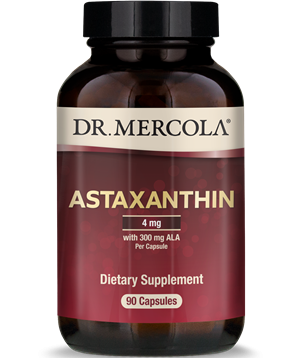
Astaxanthin 90 caps
$44.99 – $115.97 -

Wheat Rescue 60 caps
$62.99 -
Sale!

L-Glutathione Power 50 gms (powder)
Original price was: $117.46.$104.20Current price is: $104.20. -
Sale!

S-Acetyl Glutathione Synergy 60 vcaps
$66.99 – $115.50 -

-

Lymphapar 1 oz liquid
$15.00 -

Bronze Orgone Charge Plates
$100.00 – $200.00 -
Sale!

Lymph Mover Plus
Original price was: $118.78.$105.50Current price is: $105.50. -

-
Sale!

Boost Natural Killer (NK) Cells
Original price was: $277.18.$209.00Current price is: $209.00. -

Nrf2 Renew 120 vegcaps
$72.49 -

Pure PaleoCleanse Plus Detox
$72.25 -

Glycyrrhiza / Licorice 4 oz
$53.20 -
Sale!
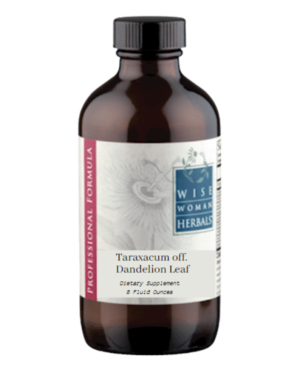
Dandelion Leaf 8 oz
Original price was: $97.50.$89.00Current price is: $89.00.

































